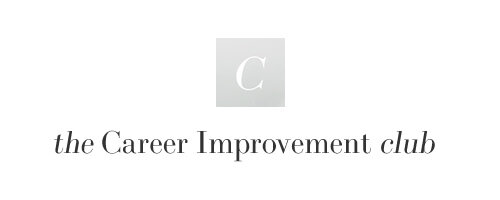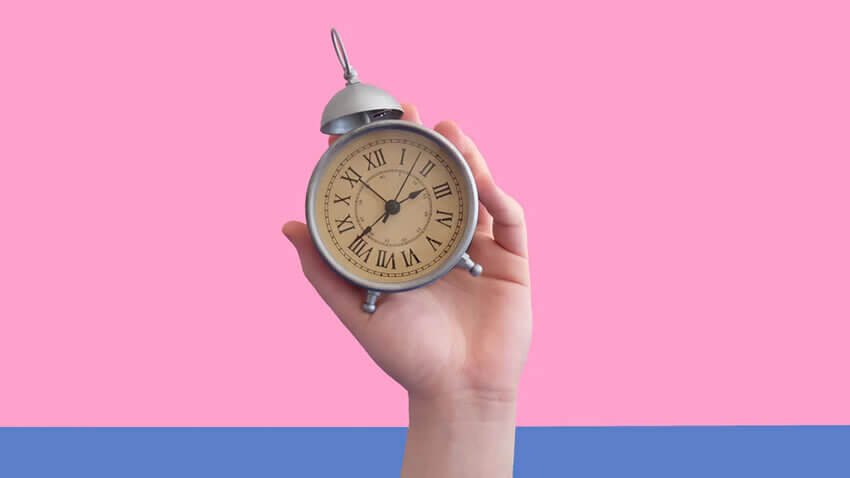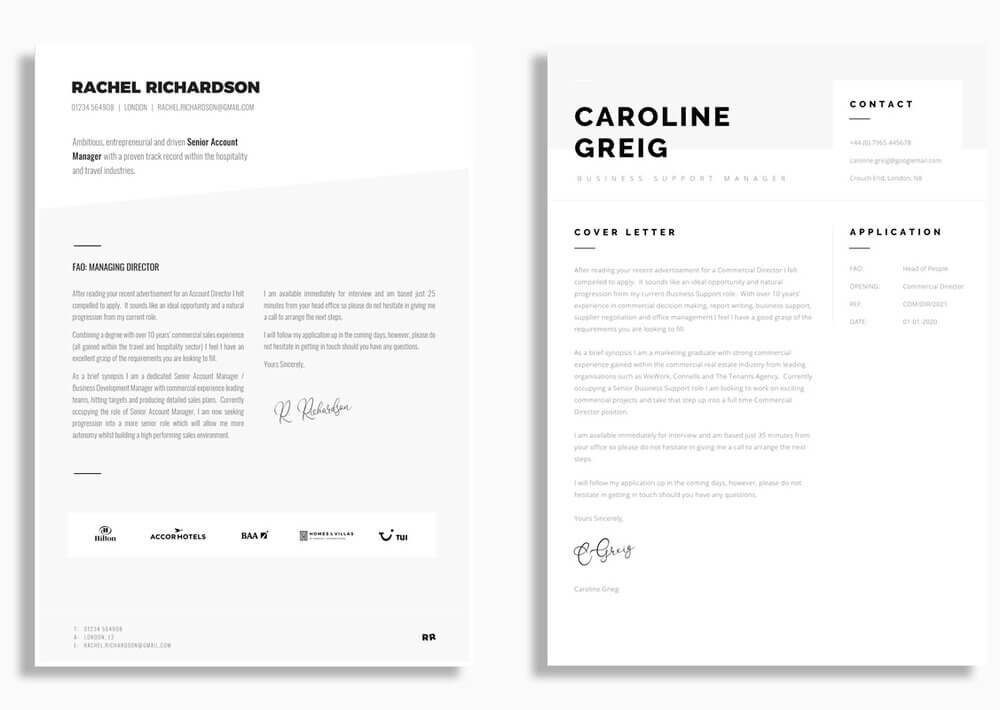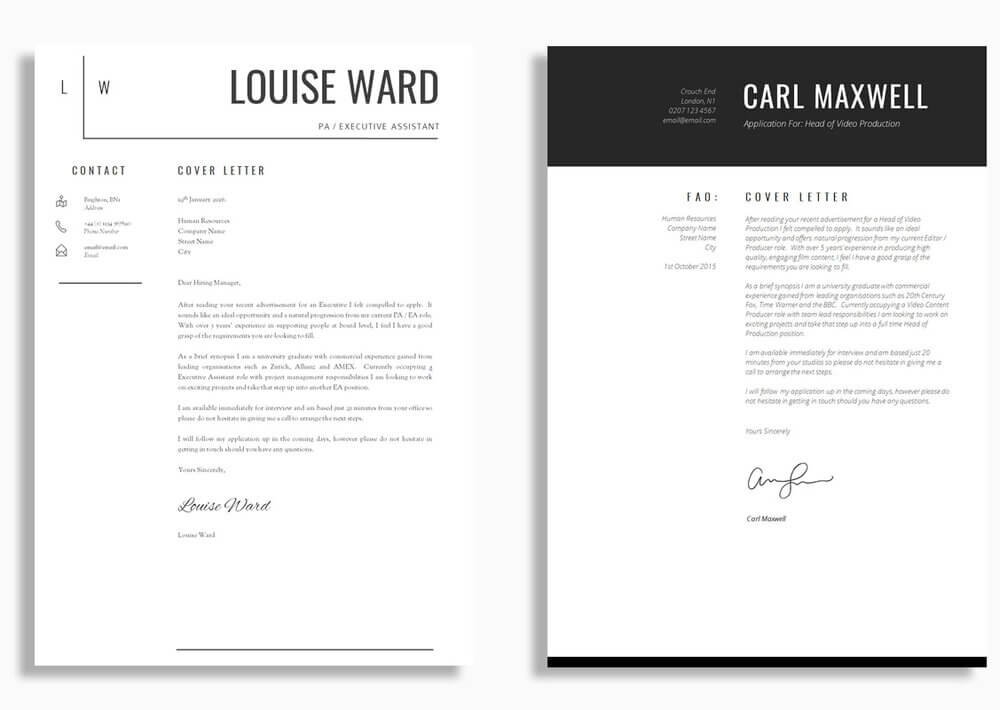Let’s face it, searching for jobs can be a hard slog, registering on all the job boards, sprucing up your CV, preparing for interviews, it can be a real drain right? So why would anyone want to create more work for themselves by hand-writing personalised cover letters for each job application. Well, if done correctly (avoiding these mistakes) this whole job search thing might be over quicker than you think.
This article is for jobseekers looking to make an impact or those frustrated by constantly being overlooked for the best opportunities. We’ll uncover some top Cover Letter tips to help you stand-out, get noticed and give hiring managers what they want…
What’s In
What is a cover letter
What is the purpose of a cover letter
Is a cover letter necessary?
When to use a cover letter
How to write a cover letter
Do your research
Answer questions in advance
Show enthusiasm
How to structure a cover letter
Letter writing etiquette – the golden rules
Cover letter examples / formats
Cover letter designs
1. // What Is A Cover Letter?
A cover letter (or sometimes referred to as a Motivation letter or Letter of Application) is the document equivalent of interview small talk, it’s that polite introduction that gives your future employer a brief snapshot and overview of who you are before progressing into deeper conversation (i.e. when they review your CV).
Forming part of your job application your cover letter is normally included as a separate attachment which consists of a single page of no more than 400 words.
2. // What Is The Purpose Of A Cover Letter?
Your cover letter gives you the chance to differentiate yourself from other applicants and a unique opportunity to talk directly to the hiring manager.
Within the cover letter you’re aiming for a short elevator statement that hook the reader’s attention, pre-empt any concerns that might arise and generates high levels of intrigue (some creative writing skills may be required here to stand-out).
3. // Is A Cover Letter Necessary?
No, it is not always necessary to write a cover letter. Sometimes it is not practical to write a specific cover letter for every job application you make (especially if you are applying to lots of jobs).
A cover letter is there to address a specific employer, it is a highly personalised approach which talks directly to your target audience. You can’t cheat this by creating a single “one size fits all” letter and attaching it to everything. This approach won’t work, employers will see through it. Get personal, show your enthusiasm and do it properly or not at all.
4. When To Use A Cover Letter
There are a few key situations when attaching a cover letter will really help your chances…
1. // When an employer specifically requests it
Certain employers will actively request a tailored cover letter to address a specific question or information request. Failing to supply this information will nearly always result in a failed job application.
The three most common reasons for requesting a cover letter include:
Salary expectations - "Please supply details of your salary expectations within your cover letter on application"
Why do you want to work for us? - "Sell the reasons on why you'd like to join us in your Cover Letter"
What will you bring to the role? – “Tell us what you’ll add to the team and the company”
Keep an eye out for these requests, they are often listed towards the bottom of job adverts and in some cases are bolder to help you spot them.
2. // When you really want the job
Psychologically a jobseeker will grade vacancies into different categories before deciding whether to hit the apply button.
Nope, not for me.
Yep, I could probably do that, but do I want to?
I'd love to do that but don't have any of the skills or experience.
Wow, this job was made for me, I must have it!
If you find yourself falling into the last two statements then you need to give your job application the best possible chance of success, in this instance a cover letter is a mandatory requirement.
3. // When making speculative enquiries
Job hunting isn't just restricted to the vacancies you see online or are told about via recruitment agents. Many live jobs never actually get posted or sent to agents; they are filled by candidates already on the radars of employers. Don't be afraid to put yourself out there and make speculative enquiries to the companies you just want to go and work for.
This speculative approach can be a long game and each application can be quite time consuming to create (making an impression is key here), however if you're patient and contact the right people (find the best matches on LinkedIn and the About Us pages of websites) it can pay dividends for your career.
For this style of job searching it's essential that you write a targeted cover letter explaining the nature of your outreach and the reasons why you'd like to specifically join their company.
5. // How To Write A Cover Letter
Do your Research
Before starting anything, do your research... read up on the company, reread the job advert, visit social media feeds, go out and get a real feel for the company and what the job really involves. If possible, try and find someone currently occupying the same job on LinkedIn this can provide real insight beyond the job description.
Answer Questions in Advance
Pre-empt possible questions that might arise with your CV, for example if you listed Bristol as your location but the job is in London, a hiring manager is likely to just reject your application without much thought, use positive wording such as "I'm currently in the process of relocating to London with availability to start in 2 weeks" - placate concerns in advance.
Salary expectations, career changes, extended career gaps, levels of experience (either too senior or junior) are all other examples of information that might need to be addressed. Your cover letter is the platform to overcome these hurdles.
Show Enthusiasm
Employers want to feel like you really want to join their organisation, cover letters show them who is prepared to go that one step further and demonstrate the attitude, interest and passion for the opportunity.
In today's market many candidates share similar skills, education and experience, so employers often look at cover letters as a differentiator to highlight attitude and personality.
Many employers share this mantra: "You don't hire for skills; you hire for attitude. You can always teach skills".
How to structure a cover letter
1. Photo (if using)
For those opting to include a photo on their cover letter, make it prominent in the header but keep styles consistent with your CV design (don't have a photo on one but not the other).
"Should I include a photo on my CV" is a common dilemma for many jobseekers, but there is no right or wrong answer, it just depends on your personal preferences. As an alternative consider using an employer logo or personal branding image.
2. Full Name
Proud and visible! Make your name rememorable, ensure fonts are prominent and that you stand-out.
3. Current Job Title (or aspirational variant)
Reinforce relevancy here, use wording that directly relates to the vacancy to really grab the attention of the hiring manager.
4. Vacancy Title
Hiring managers are busy people and often have more than one vacancy live, list the vacancy title and make it clear what position you are applying to.
5. Contact Information
Often overlooked, it's important to include your contact info here as well as on your CV. Phone, email and locality should all be listed.
6. Employer Info & Date
As you would in a standard letter include the details of who you are sending it to. The vacancy reference and date can also list here. This information adds professionalism to your cover letter and completes the header nicely.
7. Introduction
In this day and age there are no excuses for not researching the right person to address your cover letter too. Using a term such as "To Whom It Might Concern" will come across as lazy and will dilute the purpose and impact of your overall approach.
Once your greeting is out the way jump straight into the good stuff, don't waste text on boring intros like "where you found the job" or "why it interests you". There is only a finite amount of time to retain the attention of your reader so grab them with bold, positive statements.
Example Introductions:
If you've worked for a competitor:
"Having worked for a major competitor of yours for the last 5 years, I've seen the rest and now I want to join the best"
If you know someone at the company:
"John Doe told me about this role and I'm so glad he did, I've heard great things about your company and this role is a perfect match for me, let me explain why..."
General introduction:
"Let me draw your attention to two reasons you may want to hire me..."
8. Be Personal & Elaborate
The key to a successful job application is relevancy and personality, an employer is looking for a candidate with the skills to do the job but also the personality that fits the role and the company.
Highlight specific achievements that directly relate to the position (keep it relevant and punchy). Employers like transparency, so explain salary expectations, interview availability, notice periods, driving licence (if applicable), locality or anything else that might directly interest your future employer.
If you have not occupied a similar role before then express this, explain traits and experiences and how this could directly relate to the position.
9. Sign off
Sign off your cover letter with a polite follow up, for example ‘I will follow my application up in the coming days, however please do not hesitate in getting in touch should you have any questions,’ this next bit is key… follow up the application with a phone call and a LinkedIn connection. For each approach re-introduce yourself and highlight your main selling points to the employer again.
Making the job application personal significantly increases your chances of an interview.
6. // Letter Writing Etiquette – The Golden Rules
Remember the golden rules of letter writing…
If your letter is addressed to a named person i.e. Dear Mr Smith, Dear Miss Smith, Dear Mrs Smith or Dear Ms Smith then the letter should end with a "Yours sincerely" (the sincerely has a small "s").
If your letter is addressed to an unnamed contact i.e. Dear Sir, Dear Madam, Dear Sir/Madam or To Whom It Might Concern then the letter should end with a "Yours faithfully" (again using a small "f" for faithfully).
7. // Cover Letter Examples / Formats
Cover Letter Example One (You’ve worked for a competitor)
Dear Ms Smith,
Having worked for a major competitor of yours for the last 5 years, I've seen the rest and now I want to join the best!
When I noticed your advertisement for a Creative Director I felt compelled to apply (Your standing in the industry and amazing client base is a real draw for me). I’m currently occupying a similar role undertaking mixed creative responsibilities across Typography, Branding, Conceptual Design and Graphic Design - I’m as comfortable pitching to clients as I am sketching designs.
I’ve admired your culture and creative output for a long time; therefore this opportunity has presented itself at a perfect time in my career development. I’m looking to make my next move a long-term commitment so feel this is my one and only window of opportunity to join you.
In addition to having all the right skills, I am available immediately for interview and am based just 15 minutes from your office so please do not hesitate in giving me a call to arrange the next steps.
I will follow my application up in the coming days, however, please do not hesitate in getting in touch should you have any questions.
Yours sincerely,
John Doe
Cover Letter Example Two (You know someone at the company)
Dear Ms Smith,
Max Smith told me about your opening for a Creative Director and I'm so glad he did! I've heard great things about your company and this role is a perfect match for me, let me explain why...
Currently occupying a similar Design role I undertake mixed creative responsibilities spanning Typography, Branding, Conceptual Design and Graphic Design - I’m as comfortable pitching to clients as I am sketching designs. With 5 years’ experience, a first-class portfolio and award-winning designs (with major accounts) I feel I could add real value to your team.
Max has spoken of great things at your company the culture and creative output sounds first class, and something I would love to be a part of.
Having currently taking the leap to move (I’m working my notice) I am available to start and interview at very short notice. In addition I live locally (just 15 minutes away) and have a full clean driving licence.
I will follow my application up in the coming days, however, please do not hesitate in getting in touch should you have any questions or would like to just meet for a coffee (with or without Max).
Yours sincerely,
John Doe
Cover Letter Example Three (General Approach)
Dear Ms Smith,
With 5 years’ experience, a first-class portfolio and award-winning designs (with major accounts) I feel I could add real value to your team. Let me explain why you may want to hire me...
Currently occupying a similar Design role I undertake mixed creative responsibilities spanning Typography, Branding, Conceptual Design and Graphic Design - I’m as comfortable pitching to clients as I am sketching designs, a rare trait in the industry. My background includes a 1st Class degree from Central Saint Martins and strong commercial experience gained both in-house for large brands and agency-side.
I’ve admired your culture and creative output for a long time; therefore this opportunity has presented itself at a perfect time in my career development. I’m looking to make my next move a long-term commitment so feel this is my one and only window of opportunity to join you.
In addition to having a good blend of skills, I am available immediately for interview and am based just 15 minutes from your office so please do not hesitate in giving me a call to arrange the next steps.
I will follow my application up in the coming days, however, please do not hesitate in getting in touch should you have any questions.
Yours sincerely,
John Doe
8. // Cover Letter Designs
Use a design that reflects your industry, think neutral colours and white space for professional sectors…
In the examples below we feature the Bauer Cover Letter Template (left), the Siena Cover Letter Template (right).
Additional examples of professional cover letter formats include the Aldgate Cover Letter Template (below left) and the Mayfair Cover Letter Template (below right)
If marketing, creative or design roles are more your thing then don’t be afraid to opt for a less traditional look and feel (the aim of the game is to be noticed remember).
On the left we have the Holborn Cover Letter Template and on the right is the Seneca Cover Letter Template
Again, further examples of creative cover letter designs include the Compton Cover Letter Template (below left) and the Aurelius Cover Letter Template (below right)
Well, that concludes our guide to cover letters, thanks for reading and good luck with creating your brilliant new job applications and embarking on your amazing career journeys! Feel free to get in touch with any questions (or success stories).
Article updated 06/09/2022
Create a Job Winning CV
in Minutes!
Get your professionally designed CV template today…









